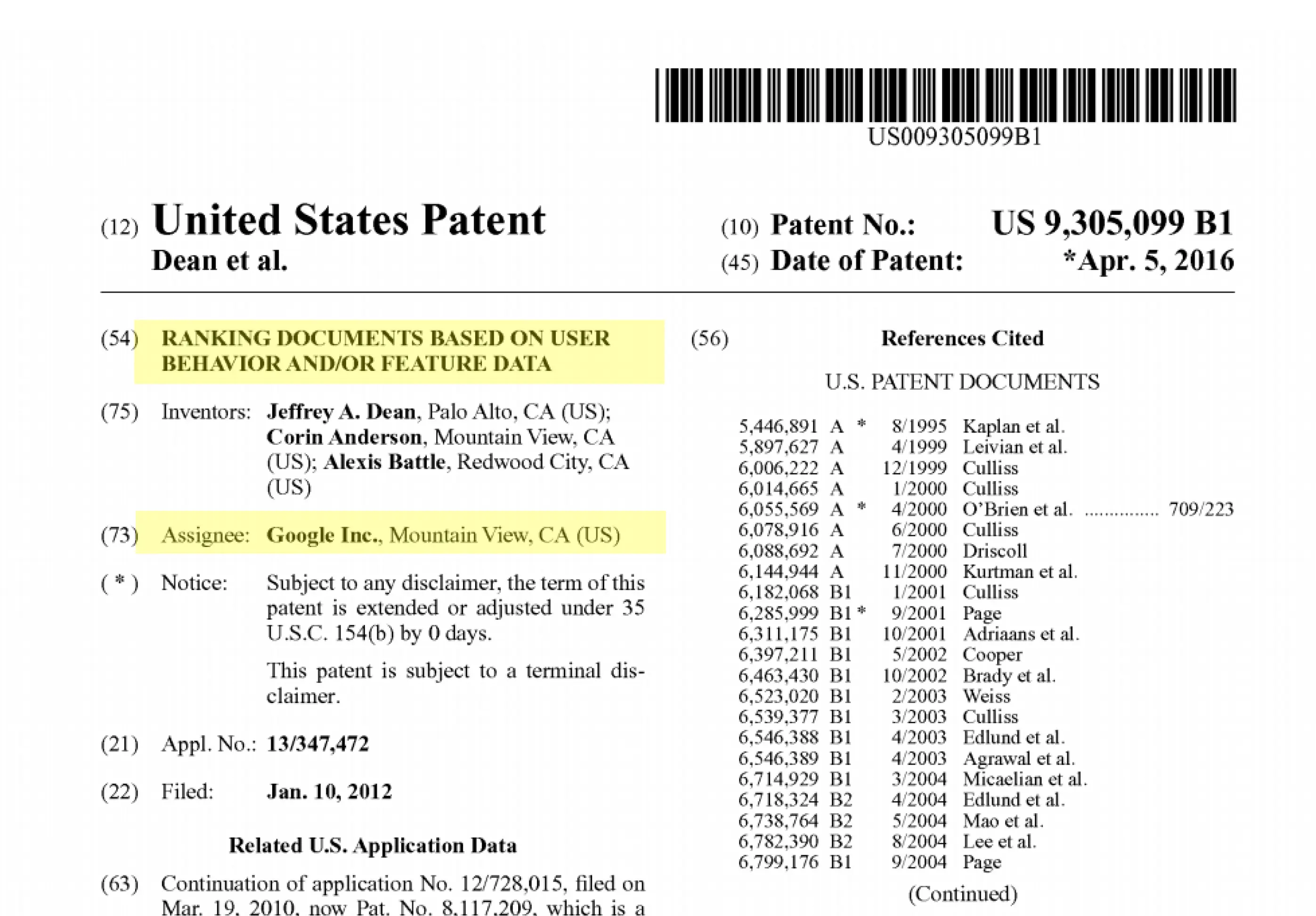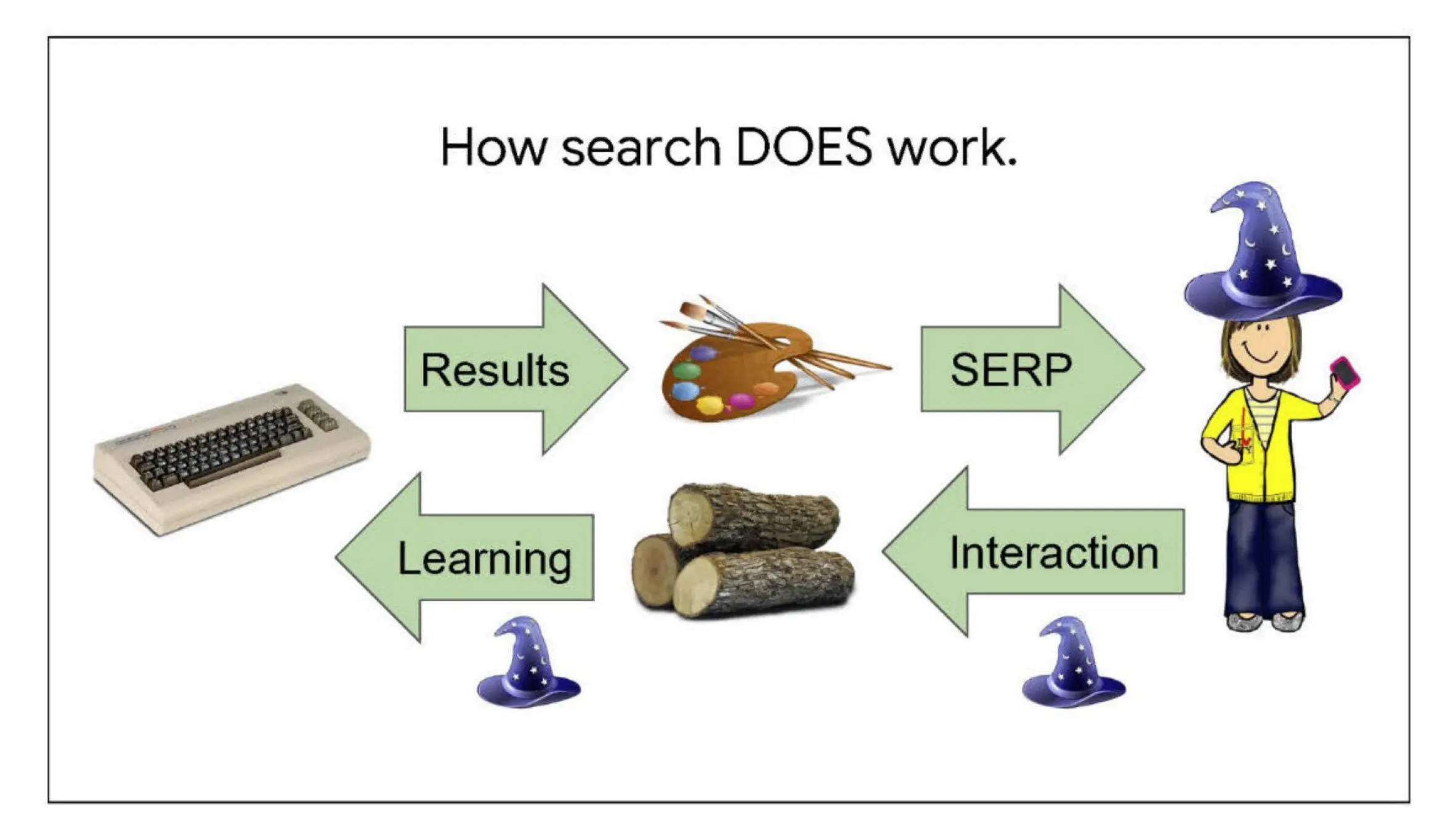
The Unsurprising Revelation of User Signals in Google's Search Algorithm
Decoding Google's Algorithm: A Decade Ahead of the Curve!

An insignificant Google patent...
As a SEO teacher at the University of Geneva for over a decade, I've had the privilege of guiding bright minds through the intricate world of search engine technology. A focal point of my curriculum has been the insightful analysis of Google's patents, particularly one that has stood the test of time: US 8,117,209 B1, filed on February 14, 2012, and granted on February 14, 2012.
This patent, which I've been teaching to my students for more than ten years, outlines a method for ranking documents based on user behavior and feature data. It's a testament to Google's foresight in the realm of search engine optimization (SEO) and the importance of user interaction data.

An insignificant patent that solves amazing Search Engine problems
As a former SEO manager for a major search engine, Yahoo!, I had an intuition that user experience could provide vital signals to enhance various ranking algorithms. For instance, the patent filed by Google suggested the possibility of adjusting the PageRank formula based on the analysis of actually clicked links. This not only indicated a method to more easily detect artificial or unclicked links for penalization or omission but also established a foundation for what I like to call "positive paranoia" — the practice of adding links only if they are potentially and actually clickable.
An insignificant patent, yet a reality in search results ranking
Recently, a document from the Department of Justice surfaced, shedding light on Google's admission that user signals are a significant factor in search result rankings. This revelation may have stirred the SEO community, but for those of us immersed in the academic study of Google's algorithms, it was far from a surprise.
For the past ten years, I have maintained that this patent laid down a sound basis for adopting such an approach, ensuring that the links we add are not just for show, but are genuinely useful and likely to be engaged with by users.
At the same time, I posited that Google could quite simply detect "weak signals" (which now turn out to be very strong) through Chrome, such as analyzing the speed or cessation of scrolling. This behavior could indicate whether a user is in reading mode, suggesting good content, or quickly bypassing content, indicating it may be of little interest.
The patent has been clear from the start: Google, through Chrome and by the acceptance of its terms of use, is capable of collecting usage data that can be utilized for ranking purposes. This isn't just a theoretical possibility; it's a practical reality that has been shaping the landscape of search for years.

Finally a significant patent...
The patent in question meticulously details a system that assigns weights to links between documents, influenced by user behavior data and document feature data. It's a clear indication that Google has long understood the value of user interactions as a measure of a document's relevance and importance.
The alignment between the patent and the DOJ document is unmistakable. Both emphasize the critical role of user feedback in refining search algorithms. The DOJ document describes a "two-way dialogue" with users, a concept that resonates with the patent's method of learning from user actions to improve search results.
The recent acknowledgment by Google merely confirms what the patent had already disclosed: user interactions are not just a part of the search algorithm; they are a cornerstone of it. The "magic" of Google's search engine, as the DOJ document poetically puts it, stems from this continuous exchange of information, where each query and click contributes to the collective intelligence of the system.
As an academic, it's gratifying to see the principles I've been teaching for over a decade come to light in such a public discourse. It reaffirms the importance of understanding the underlying mechanisms of technology, not just its surface-level functionalities.
For my students, past, present, and future, the recent discussions around Google's use of user signals serve as a real-world validation of their studies. It underscores the significance of their knowledge and the impact it can have on the SEO industry and beyond.
In the end...
While the SEO world may be abuzz with Google's recent admissions, for those of us in academia, it's a case of "business as usual." The patent US 8,117,209 B1 has long been a roadmap to understanding the complexities of search rankings. It's a reminder that in the ever-evolving landscape of technology, staying ahead means delving deep into the intellectual properties that shape our digital experiences.
These new elements communicated to the American justice system only serve to better understand both the positions and communications of Google:
- The patent already indicated the implementation of ranking through the collection of user data.
- Google has consistently advised that Googlebot and its algorithms should be considered as an average user, and that content should be written primarily for users. This point is now clearer because the judgment of real users is taken into account for ranking.
In any case, it is evident, following the disclosure of the documents, that a significant part of Google's "magic" relies on user behavior. However, it is actually Google's ability to leverage Chrome (Desktop/Mobile) that provides a near 1:1 scale view of real user behavior.
This insight into Google's methodologies underscores the importance of creating user-centric content. It's not just about satisfying the algorithms, but about engaging the actual users whose behaviors are instrumental in determining the success of that content in search rankings
As we peel back the layers of Google's search engine sophistication, we find that the core of its success is not just in the algorithms themselves, but in the millions of users who navigate through them every day.

Written on November 7, 2023 using Indexa Surface technology.








